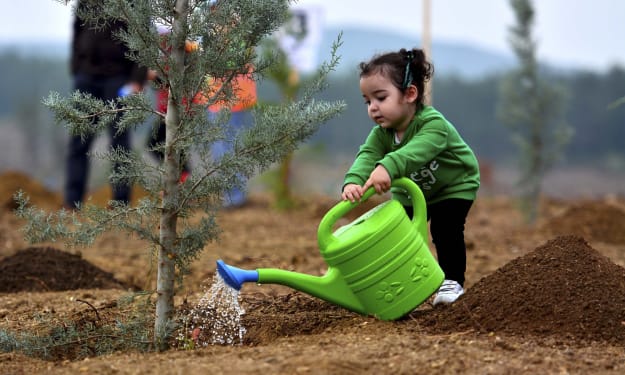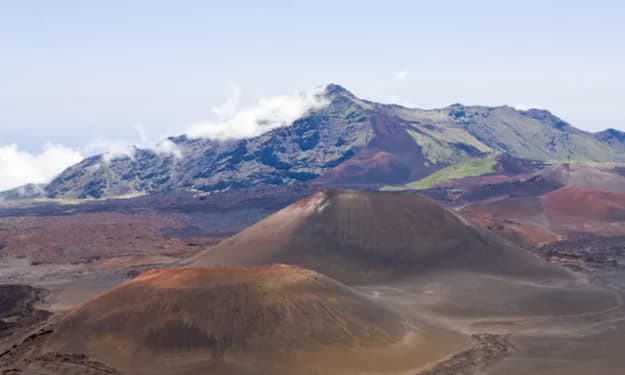Crop Diversification: Kenya's Climate Adaptation Strategy for Food Security
Nurturing Sustainable Agriculture for Climate-Resilience

Kenya, like many other regions across the globe, is facing the increasing challenges of climate change, including rising temperatures, erratic rainfall patterns, and prolonged droughts. These adverse conditions have a profound impact on the country's agricultural sector, particularly on maize farming – a crop that has long been the staple food for Kenyan households. To address the mounting threats to food security, Kenyan farmers are now turning to crop diversification as a proactive climate adaptation strategy. By transitioning away from an over-reliance on maize farming and embracing more drought-resistant crops, Kenya aims to enhance its resilience to climate change and ensure a sustainable supply of food for its growing population.
Understanding the Need for Crop Diversification
Maize has traditionally been the primary crop cultivated in Kenya due to its nutritional value, ease of cultivation, and high yield potential. However, this mono-cropping approach leaves the agricultural sector highly vulnerable to the adverse impacts of climate change. Irregular rainfall patterns, water scarcity, and increased occurrence of extreme weather events have all resulted in reduced maize yields and, in some cases, total crop failure. Consequently, this has threatened food security and pushed millions of Kenyan citizens into food insecurity and malnutrition.
Crop Diversification as a Climate Adaptation Strategy
Crop diversification involves cultivating a range of different crops with varying characteristics and environmental requirements. By diversifying their crop choices, farmers can better adapt to unpredictable climatic conditions and reduce the risk of total crop failure. Some of the key benefits of crop diversification in the context of climate adaptation include:
- Resilience to Climate Variability: By planting a mix of drought-resistant crops, farmers can increase their chances of obtaining at least some harvest, even during periods of water scarcity or erratic rainfall.
- Enhanced Soil Health: Growing diverse crops can improve soil fertility, reduce the incidence of pests and diseases, and lessen the need for chemical inputs.
- Economic Viability: Diversification opens up new markets for different crops, reducing dependency on a single commodity's volatile prices.
- Biodiversity Conservation: Encouraging crop diversity also contributes to preserving native plant species and protecting the natural ecosystem.
Drought-Resistant Crops for Food Security
Several drought-resistant crops have shown great potential for enhancing food security in Kenya. Some of the promising alternatives to maize include:
- Sorghum: A hardy cereal crop with a short growing season, sorghum thrives in hot and dry conditions, making it ideal for regions experiencing water scarcity.
- Millet: Similar to sorghum, millet is a drought-tolerant cereal crop that requires less water and can grow in poor soils.
- Sweet Potatoes: With high nutritional value and adaptable growth characteristics, sweet potatoes can provide a stable source of food and income for farmers.
- Cassava: Cassava is resilient to drought and can withstand poor soil conditions, making it a viable alternative to maize.
- Indigenous Vegetables: Cultivating indigenous vegetables, such as cowpeas, amaranth (mchicha), and spider plant (saga/saget), not only boosts food security but also promotes sustainable agricultural practices.
Challenges and Solutions
While crop diversification offers numerous benefits, there are some challenges to its widespread adoption in Kenya. These include
- Limited access to drought-resistant seed varieties,
- Lack of technical knowledge on cultivating alternative crops, and
- Insufficient infrastructure to support the transportation and marketing of diverse produce.
To overcome these hurdles, the government, businesses, NGOs, and international organizations must collaborate to:
- Provide Training and Extension Services: Disseminating knowledge about the cultivation and management of diverse crops is essential to help farmers adopt new practices successfully.
- Strengthen Research and Development: Investments in research to develop and disseminate drought-resistant seed varieties can significantly enhance the availability of suitable crops.
- Improve Market Access: Developing infrastructure to facilitate the transportation and marketing of alternative crops will encourage farmers to diversify without fear of losses.
Crop diversification represents a crucial climate adaptation strategy for Kenya to achieve food security in the face of ongoing climate change. Moving away from an over-reliance on maize and embracing drought-resistant crops can enhance resilience, preserve natural resources, and improve the overall livelihoods of farmers. By promoting crop diversification and supporting sustainable agricultural practices, Kenya can lead the way in ensuring food security for its citizens.
About the Creator
Chela Kikwai
Passionate about climate action and sustainability, I raise awareness and promote climate education through my articles. Read, Learn, Follow, Tip and Share






Comments
There are no comments for this story
Be the first to respond and start the conversation.